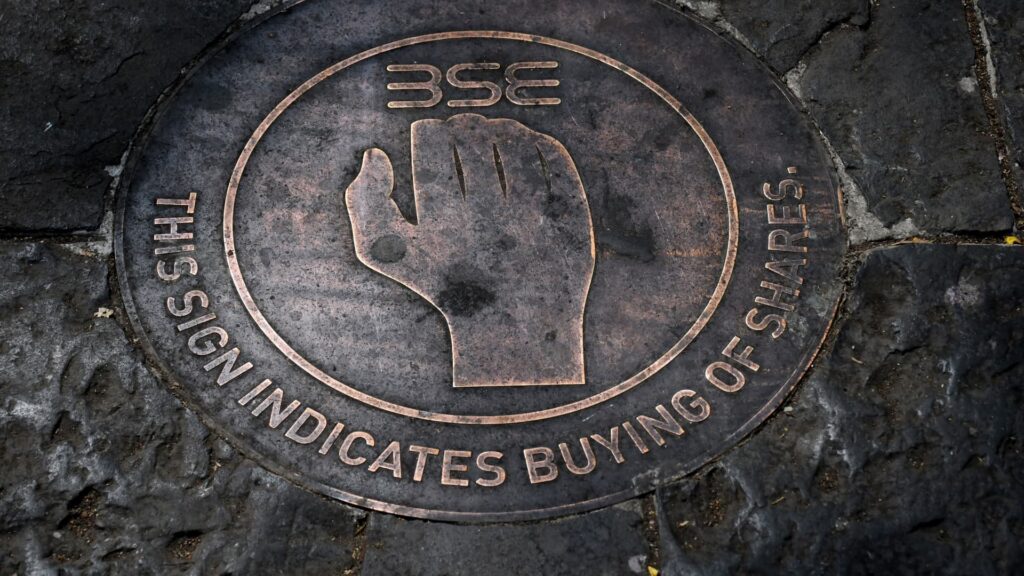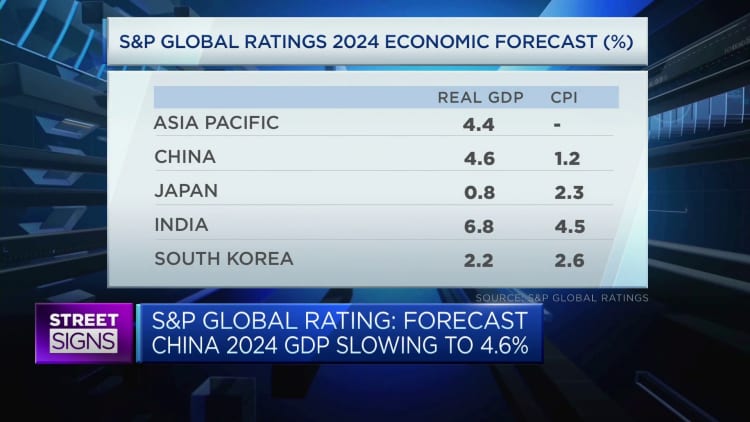
MUMBAI, MAHARASHTRA, INDIA – 2024/02/01: A circular metal emblem with words ‘This sign indicates buying of shares’ is seen near the pavement of a street near Bombay Stock Exchange (BSE) in Mumbai.
Sopa Images | Lightrocket | Getty Images
Stocks in China and Hong Kong sold off a massive $4.8 trillion in market capitalization since 2021, which according to HSBC, is more than the value of the Indian stock market.
The statistic does not bode well for either China or Hong Kong, especially when the National Stock Exchange of India has only grown during the same period.
The NSE overtook Hong Kong Stock Exchanges and Clearing to become the fourth largest in the world in January, according to data from the World Federation of Exchanges, and is worth $4.63 trillion, making it the third largest in Asia.
This is indicative of how much traction Indian stocks have gained in the last few years, in contrast to declines in both China and Hong Kong.
Mainland China’s CSI 300 index has fallen for three straight years, closing out with declines of 11.4% last year. Hong Kong’s Hang Seng index performed even worse, with 2023 as its fourth consecutive decline ending the year 13.8% lower. Both were the bottom performers among major Asia-Pacific indexes last year.
China worries hit Hong Kong markets
China’s beleaguered property sector has been a source of worry for investors, which has also affected Hong Kong. Many Chinese real estate stocks including Evergrande Group and Country Garden are listed on the HKEX.
China set its growth target at 5% for 2024, but analysts have been skeptical of the world’s second-largest economy meeting the mark. S&P Global Ratings said last week that it expects China’s GDP to grow 4.6% in 2024, slower than the 5.2% rate for 2023.
“Our forecast factors in continued property weakness and modest macro policy support. Deflation remains a risk if consumption stays weak and the government responds by further stimulating manufacturing investment,” Louis Kuijs, Asia-Pacific chief economist at S&P Global Ratings, wrote in a client note.

Former HKEX CEO Nicolas Aguzin told CNBC in March that lack of confidence in China, high interest rates and geopolitics are all impacting valuations and lowering the number of new listings on the exchange.
India: An investor favorite
Indian stocks have rallied amid broader optimism about the country’s growth. The country’s benchmark Nifty 50 index has risen for eight straight years, registering gains of 20% in 2023.
Research from HSBC also showed that India’s National Stock Exchange has overtaken the Shanghai Stock Exchange to become the second largest globally in terms of monthly transaction volume. But it still lagged the Shenzhen Stock Exchange which took the top spot.
Indian stock exchanges also saw the most initial public offerings in 2023, according to research from EY India. That’s despite a subdued environment for IPOs, especially in Asia. India saw 220 IPOs last year, raising $6.9 billion in proceeds, according to EY. That’s a 48% jump in deal activity from 2022.
“While China’s market has significantly slowed, India has emerged as a standout performer,” said George Chan, EY global IPO leader, in a separate research report.
Deals in India made up just 6% of IPOs globally in 2019, but Chan said the country now accounts for 27% as of the first quarter, “propelling it to the position of the world’s leading IPO market by deal volume.”
In contrast, EY data showed there were 30 IPOs in China’s A-share market in the first quarter, raising $3.4 billion. That’s the fewest number of IPOs and smallest proceeds since 2020. Hong Kong had just 10 IPOs during the three-month period and only two crossed $100 million in deal size, for the lowest proceeds since 2010.






